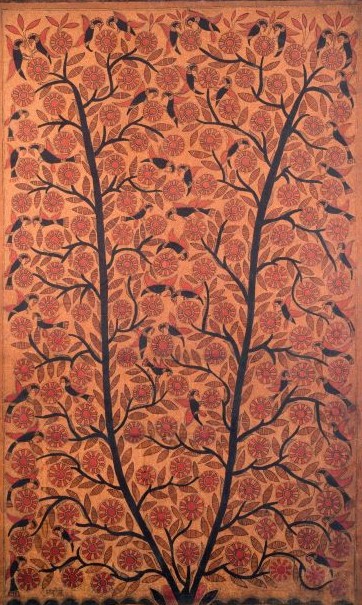
Sita Devi, Untitled, Acrylic on Board, 98.5 x 59.9 inches
Madhubani Art
Associated with myths and legends, Madhubani painting originated in the Madhubani region, Darbhanga district of Bihar, India. The region is known as the birthplace of Sita, an important figure in the ancient Hindu epic of Ramayana. This style flourished with the prominent subjects depicted like religion, representation of deities, social events of childbirth and matrimonial ceremonies, and abundance of nature. They were traditionally painted by women on freshly plastered mud walls and floors to adorn their homes and celebrate auspicious events. The artists would procure the paints and tools from nature, like pigment from flowers and brushes from twigs and bamboo sticks and pursue the quintessential robust colour palette, geometric patterns and stylised imagery. The early 1960s saw a massive shift in the trajectory of Madhubani paintings with the introduction of paper and other media in the region, as this was the first time that the genre entered the global realm and carved newer avenues for women to venture into the market and make a living from their practice. Some of the artists that came into the limelight included Jagdamba Devi, who received the first Padma Shri for Madhubani paintings, Mahasundari Devi, Ganga Devi, Baua Devi, also a national award winner who has shown her work in various countries including Spain, France, Japan and Germany, Jamuna Devi as well as Sita Devi, who was felicitated with Padma Shri in 1981 and Anmana Devi, prominent artists of the tradition whose works are featured here.

